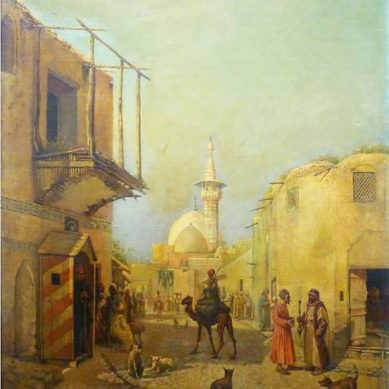You searched
Painter
Wojciech Weiss
Are you interested in the sales or the purchase of his artworks?
We buy works of this artist
and of other painters and sculptors from the 16th century to the first half of the 20th century
The Berardi gallery offers a free and without obligation service for evaluation of ancient and modern art . To find your way in the art market, very complex and full of nuances, it is better to rely on a professional consultant who can answer fast and concretely to your needs. The clarity of the answers will resolve effectively the need to estimate or sell an asset.
Contact us immediately without commitment
Answers also in 24 hours:
Wojciech Weiss
Wojciech Weiss
Wojciech Weiss was born in 1875 in Leorda, Romania, but in 1888 he moved to Lvov to study at grammar school. At the beginning of the 1890s, he and his family moved to Płaszów, a district of Krakow, where, in addition to continuing his classical studies, he began attending the evening drawing school at the Academy of Fine Arts in Krakow.
From 1892, he enrolled in the regular courses, obtaining his diploma six years later, accompanied by a gold medal at the last academic competition and a scholarship that enabled him to complete his education through various stays throughout Europe. From his earliest youthful expressions, Wojciech Weiss specialised in history painting, through which he focused on narrating the events of the Polish people.
From history painting to Symbolism
Looking above all to the works of Jan Matejko, he became the interpreter of scenes rich in detail and characters, constructed through loose brushwork and a varied palette. Among his earliest known works are the historical scenes Bolesław Chrobry entering Kiev from 1891 and Evocation of the Spirit of Barbara Radziwiłłówna from 1894.
After his studies, he visited Germany, Austria and Hungary, before coming to Paris, where he began to develop a certain sensitivity towards portraiture, which became one of his characteristic features. Having abandoned history painting, he concentrated on intimate and melancholic production, veiled in a symbolism that was influenced by the German and Viennese Secession.
Paintings such as The Melancholic and The Consumptive, exhibited at the Exhibition of the Society of Polish Artists, marked the beginning of this new direction, which then led to his most famous works of the early 20th century, Radiant Sunset, Phantom in the Willow and Portrait of Parents, which won a gold medal at the 1900 Paris World Fair.
The relationship with Italy
The following year, Wojciech Weiss travelled to Italy, staying in Florence, Venice and Rome, where he came into contact with the Polish artist community. During these years, in works such as In a Florentine Pergola and From the Palatine Hippodrome, the painter moved more and more towards an expressionism that looked to the compositions of Munch, in the use of a wavy, richly coloured brushstroke.
Even in his choice of themes, the Symbolist and Secessionist direction became increasingly evident, as can be seen in his production throughout the first decade of the 20th century. These include the works Demon, Citizen’s Funeral and some highly introspective and disturbing male nudes. Particularly linked to the Vienna Secession, he was also president of the Society of Polish Artists and was appointed professor of painting at the Academy of Fine Arts in Krakow in 1910.
In the same year, he participated in his first Venice Biennale with My Wife, Church of Santa Maria and Spring. He returned regularly to the lagoon exhibition until 1932, presenting some of his most significant paintings, including Morning Sunshine, My Sisters, The Spanish Shawl, Idyll, Helen, Red Background, Nude and The Muses.
Before the outbreak of war, he made another stay in Rome in 1913 before taking refuge in Vienna, where he began to devote himself to landscape painting, influenced above all by Cézanne’s post-Impressionism.
Between personal landscapes, intimate portraits, Symbolist scenes and mythological narratives, Wojciech Weiss won numerous awards in Poland in the inter-war period. He became the first vice-president of the Academy of Fine Arts in Cracow and was particularly involved in regularising the admission of women into the institution. After an important solo exhibition in Cracow in 1934, his exhibition activity began to become sparser and more reserved. She died in Krakow in 1950.
Elena Lago





